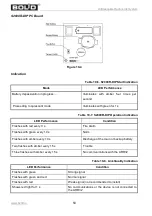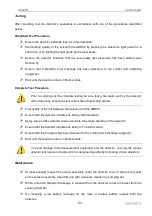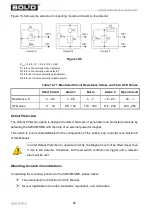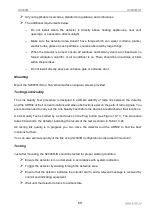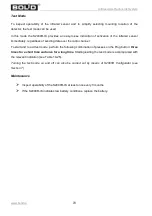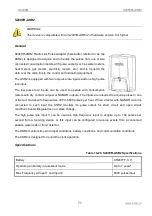
Addressable Radio Link System
www.bolid.ru
64
Self-Diagnostic Procedures
To inspect operability and facilitate mounting, the S2000R-SMK can be switched to the self-diagnostic
mode. In the self-diagnostic mode four tests are sequentially run manually, with the LED flashing triply
in red between the tests.
To start the self-diagnostic procedures press the tamper switch (see Figure 10-8) three times for a
short time and then once for a long time. While having entered the self-diagnostic mode, the detector
LED flashes triply with red.
Test 1. Inspecting Operation of the Reed Switch Contacts
Once being switched to the self-diagnostic mode the detector automatically runs the first test –
inspecting the reed switches. If you bring a magnet to the detector from the side of the first (SW1) or
the second (SW2) reed switch, the detector’s LED illuminates with red or green light indicating proper
operation of the reed switch contacts.
To proceed to the next test, press the Prog Button on the Detector.
Test 2. Checking XP1 Jumper Availability
After the LED flashes triply with red indicating proceeding to the next test, the detector checks
availability of the XP1 jumper and indicates the results as shown in Table 10-18.
Table 10-18. Indication of Availability of XP1 Jumper
LED Performance
Description
Shows solid green light
The jumper is fitted.
The data from the Monitored Circuit are being
processed.
Shows solid red light
No jumper has been found.
No data from the Monitored Circuit are processed.
Please press Prog Button to go to the next test.
Test 3. Battery Voltage
After the LED flashes triply with red indicating proceeding to the next test, the detector measures the
battery voltage and indicates the results as shown in Table 10-19.
Table 10-19. Indication of Battery Voltage
LED Performance
Description
Shows solid green light
Normal battery voltage
Shows solid red light
Low battery voltage

